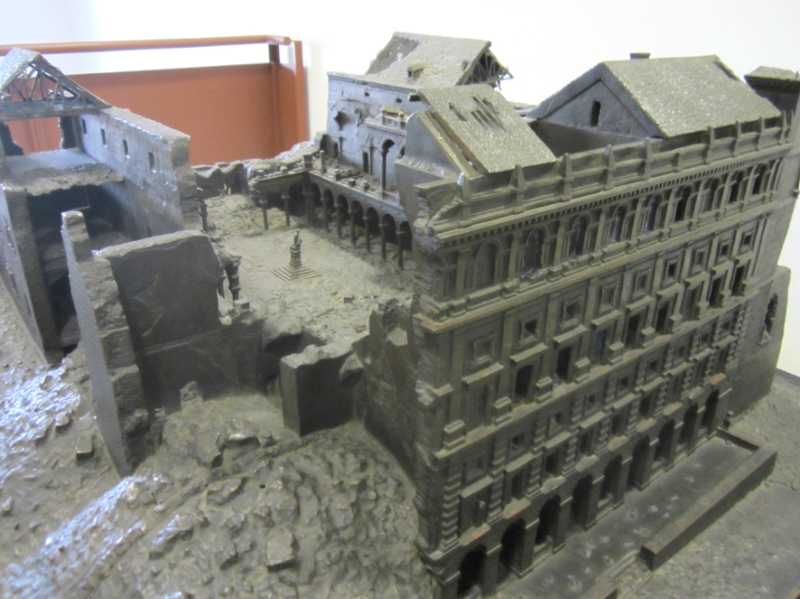MOCK-UPS

The collection of mock-ups comes mostly from the engineers’ museum; they were created in late 19th c. so they could be used by the cadets of the military academies who came to the museum to complete their education. They are scaled representations, generally of battles, buildings or engineering projects created with the purpose of learning history of the technics in engineering, architecture, tactics of battles, etc. It is worth mentioning the mock-up of the Firearms Factory of Toledo, those of the Sanctuary of Santa Maria de la Cabeza, the mock-up of the Alcazar of Toledo, in its original and final condition during the fight (and recently restored and placed in the new hall History of the Alcazar), as well as the mock-up of Ciudad Universitaria, after the devastating effects of the civil war.
Another series of mock-ups represents different coastal bastion fortifications, located both in Spain and America. In these, it can be clearly perceived the importance of the geographical research to achieve the defensive effectiveness of the construction. As an example, the scaled mock-up of the Castle of San Juan de Ulúa, in Veracruz.
But, undoubtedly, the gem of this collection is constituted by the mock-up of a fortified city with a study of the fortification systems, designed by the most renowned military European engineers (Vauban) since mid-16th c. till late 17th c., when it was created. The mock-up, commonly known as “Vauban”, is a model belonging to the Cabinet of Antiques of Felipe V, made probably by a metalsmith, with a base in ebony, bronze, gilded silver and enamel, which represents a square with several ideal defensive systems, and almost 3500 figurines (artillerymen, sappers and miners, cavalry and civilians depicting scenes) in polychrome silver.
Images
-
Scale model of the castle of San Juan de Ulua, Veracruz (Mexico)
 MOCK-UPS
MOCK-UPS -
Scale model of the Alcázar of Toledo
 MOCK-UPS
MOCK-UPS -
Scale model of a crane
 MOCK-UPS
MOCK-UPS -
Alcántara Bridge
 MOCK-UPS
MOCK-UPS
